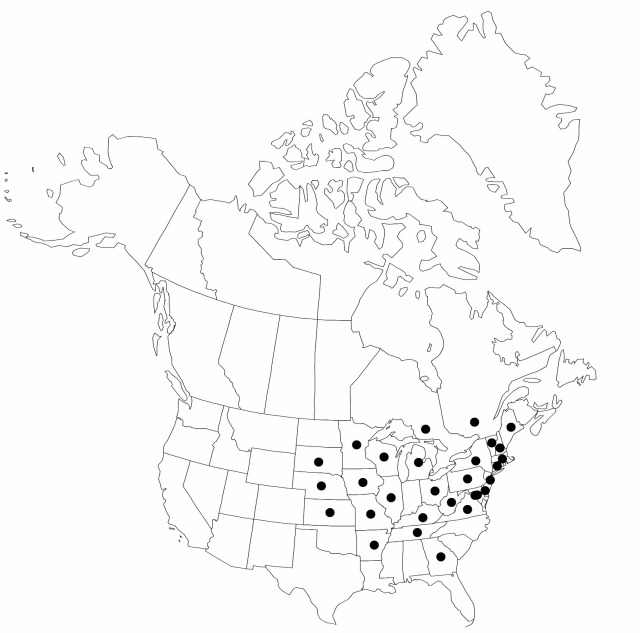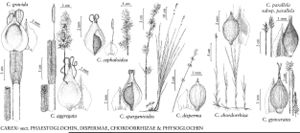Carex sparganioides
Sp. Pl. 4(1): 237. 1805.
Plants without conspicuous rhizomes. Culms 30–100 cm, 3–6 mm wide basally, 0.7–1.1 mm wide distally. Leaves: proximal sheaths loose, longitudinally green-and-white-striped, green-and-white-mottled, with prominent cross-veins on backs, fronts hyaline and transversely rugose; ligules 3–8 mm, as long as wide; widest leaf-blades 5–10 mm wide. Inflorescences with 6–15 spikes, 3–15 cm × 8–12 mm, occasionally compound and then somewhat larger; proximal internodes usually 20+ mm, more than 2 times as long as proximal spikes; proximal bracts to 2 cm; spikes with up to 50 ascending to spreading perigynia. Pistillate scales hyaline with green midvein, ovate to subcircular, 1.8–2.5 × 1.1–1.8 mm, body 1/2 length of perigynium, apex obtuse to acuminate or short-awned. Anthers 0.7–1.3 mm. Perigynia pale green, with wing 0.1–0.2 mm wide distally, veinless or weakly veined abaxially, 3.3–4.3 × 1.5–2.5 mm, margins serrulate distally; beak 0.8–1.2 mm, apical teeth 0.2–0.4 mm. Achenes suborbiculate, 1.7–2.2 × 1.5–1.8 mm. 2n = 46, 48.
Phenology: Fruiting late spring–early summer.
Habitat: Dry to moist deciduous and mixed forests, forest edges, on neutral or basic soils
Elevation: 50–300 m
Distribution

Ont., Que., Ark., Conn., Del., D.C., Ga., Ill., Iowa, Kans., Ky., Maine, Md., Mass., Mich., Minn., Mo., Nebr., N.H., N.J., N.Y., Ohio, Pa., S.Dak., Tenn., Vt., Va., W.Va., Wis.
Discussion
Selected References
None.
Lower Taxa
"shortened" is not a number."/2lengthofperigynium" is not declared as a valid unit of measurement for this property.
